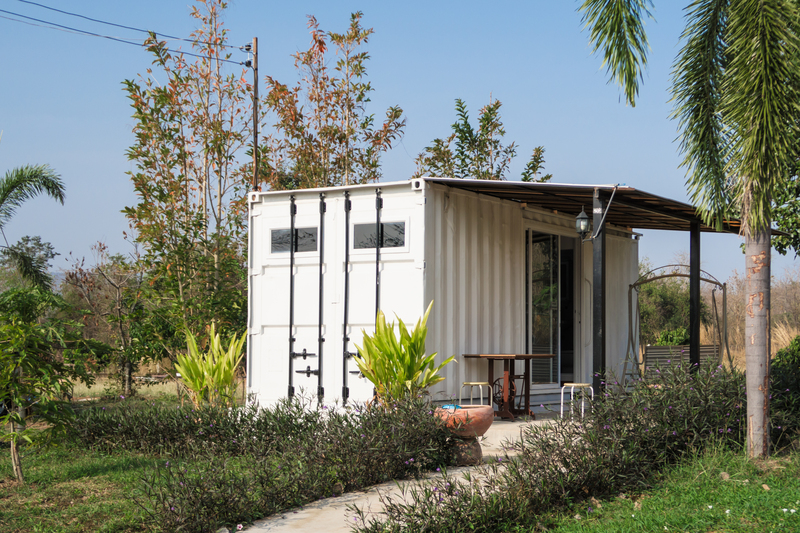Building an Earth-Conscious Abode: Tips and Tricks
As environmental concerns take center stage, building an earth-conscious abode has become more than just a trendy option. It's a necessary step towards sustainable living. Whether you're looking to build a new eco-friendly home or retrofit your current dwelling, there are numerous strategies to ensure that your living space aligns with your environmental values.
Understanding Earth-Conscious Design
Creating a sustainable and earth-friendly home goes beyond just using green materials. It encompasses energy efficiency, water conservation, and resource management in ways that minimize negative impacts on the environment.
Why Choose Eco-Friendly Homes?
- Energy Efficiency: Earth-conscious homes are designed to use resources wisely, reducing energy bills and carbon footprint.
- Health Benefits: Utilizing non-toxic materials improves indoor air quality, leading to better health for occupants.
- Long-Term Savings: While the initial investment might be higher, the reduction in utility bills and maintenance costs make it financially viable over time.
- Environmental Impact: Minimize your contribution to pollution and environmental degradation.

Key Elements of an Earth-Conscious Abode
1. Site Selection and Orientation
The location and orientation of your home are fundamental to sustainability. Choose a site that maximizes solar energy use and promotes natural ventilation. North-facing homes in the northern hemisphere, for instance, capture more sunlight, improving heating efficiency.
2. Sustainable Building Materials
Choosing the right materials can significantly reduce the environmental impact of your home:
- Recycled Materials: Use recycled steel, reclaimed wood, and other salvaged materials to reduce resource depletion.
- Bamboo and Cork: These renewable resources grow quickly and have less impact on the environment.
- Insulated Concrete Forms (ICFs): ICFs provide excellent insulation and durability while being eco-friendly.
It's crucial to select materials that are not only sustainable but also suitable for your region's climate.
3. Energy Efficiency
An earth-conscious home thrives on energy efficiency:
- Solar Panels: Harness the power of the sun to generate clean energy for your home.
- LED Lighting: Energy-efficient lighting options reduce electricity use and last longer.
- High-Performance Windows: Use double or triple-glazed windows to enhance insulation and reduce heat loss.
Improving insulation and investing in smart home systems can also significantly lower energy consumption.
4. Water Conservation
Conserving water is a crucial component of sustainable living. Implement the following strategies to reduce water usage:
- Efficient Fixtures: Install low-flow toilets, faucets, and showerheads.
- Rainwater Harvesting: Collect rainwater for garden use or flushing toilets.
- Greywater Systems: Recycle water from baths and sinks for irrigation.
5. Indoor Air Quality
Maintain a healthy indoor environment through the use of non-toxic materials and proper ventilation. Choose paints and finishes that are low in volatile organic compounds (VOCs).
Design Features of an Eco-Friendly Home
Natural Lighting and Ventilation
Maximize natural light to reduce the need for artificial lighting. Use skylights and large windows, and consider open floor plans to promote air circulation. Proper ventilation not only reduces the need for heating and cooling but also improves indoor air quality.
Green Roofs and Walls
Incorporate green roofs or vertical gardens to insulate your home naturally and contribute to biodiversity. These features help regulate temperature and reduce rainwater runoff.
Smart Home Technology
Invest in smart thermostats, energy-efficient appliances, and home automation systems. These technologies allow you to monitor and minimize energy use effectively, contributing to the sustainability of your home.
Retrofitting Existing Homes
You don't need to start from scratch to create an earth-conscious abode. Retrofitting is a viable option for making existing homes more sustainable:
- Update Insulation: Replace outdated insulation materials to improve energy efficiency.
- Upgrade Windows: Install energy-efficient windows to reduce heat loss.
- Install Solar Panels: Even older homes can benefit from solar energy with the addition of solar panels.
- Replace Old Appliances: Swap out older appliances for their energy-efficient counterparts.

Challenges and Considerations
While constructing an eco-friendly home offers numerous benefits, it also comes with its challenges. Cost is often a significant factor; however, the long-term savings usually offset the initial expenses. Additionally, finding contractors experienced in sustainable building may be more challenging, but as demand grows, expertise in this area is increasing.
Conclusion
Building an earth-conscious abode is a comprehensive process that combines intelligent design, eco-friendly materials, and sustainable technologies. By taking these steps, not only will you minimize your environmental footprint, but you will also create a healthier and more economical living space. Whether starting anew or retrofitting, every contribution counts towards a more sustainable future.
As awareness rises and technology evolves, building eco-friendly homes will not just be an idealistic choice but a practical, forward-thinking necessity.
By choosing to live sustainably, you're making a statement that balances today's needs without compromising the ability of future generations to meet theirs.